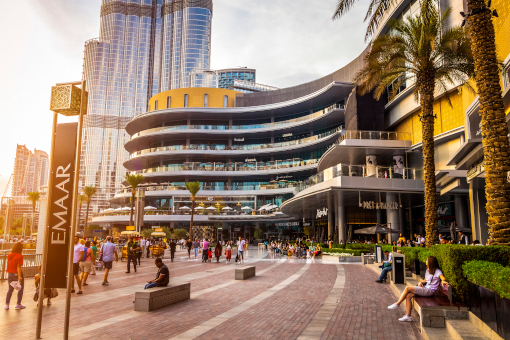Now you don’t have to wander round searching for an empty meeting room at the office or for a particular shop in a huge shopping mall. An app in your phone can not only find it, but also show you the way there. Three sources of information indoors replace what satellites do outdoors.
The Senion AB company was founded in 2010 after a course in entrepreneurship at Linköping University. Its first product was an app that guides visitors in large shopping malls and helps them find their car again, if necessary.
“On the course, four of our researchers in sensor fusion happened to meet a researcher from the Department of Computer and Information Science. Our researchers could handle the technology while the information scientist managed the application”, remembers Fredrik Gustafsson, professor of sensor fusion in the Department of Electrical Engineering, Linköping University.
The first order came from 80 large shopping malls in Singapore, and the system is now in operation in places such as the largest shopping mall in America, Mall of America and the largest shopping mall in the world, Dubai Mall. Visitors get a blue dot on the indoor map thanks to Senion’s innovation, which allows the app to track them as they move through the centre, and back to the car again. The routes they take are logged anonymously, and the owner of the shopping centre can analyse the patterns, how many people take a certain pathway and how long they remain at any location. The shops can also send out special offers to customers in the shopping centre through the app.
A more important use case, however, may be the modern and smart office, where an employee can rapidly find an unoccupied workplace or meeting room. If they haven’t had time to book in advance and send out an agenda, the app looks after this as the employees enter the room. As they leave the room, the app asks whether they want to end the booking.
“Large companies with flexible offices can save money directly here. The employees save time, and the company can manage with smaller premises”, says Fredrik Gustafsson.

When outdoors, we are used to navigating using maps and GPS, but this doesn’t work indoors. The system instead is based on information from three completely different technologies; inertial sensors, radio signals, and building plans. In order to join such completely different sources of data, a particle filter is used.
An inertial sensor senses acceleration and speed of rotation. The system uses the sensors to find out how the user moves through the building relative to the starting point. It also uses small, cheap and highly energy-efficient transmitters, Bluetooth beacons, along the walls, where radio measurements can measure the distance to them, as reference points. Finally, the building plans are used to determine probable alternatives for how people move around, and to eliminate impossible routes, such as walking through walls or jumping between floors.
“In order to be able to combine signals from three so completely different sources as a map, radio signals from beacons, and information from inertial sensors, we need to use particle filters. This is a technology invented in 1993 that our research group has been working with since 1998”, says Fredrik Gustafsson. Within a few years of starting, the research group started to publish articles, both theoretical and applied, that today have received thousands of citations.
To put it simply, a particle filter generates a large number of random routes on the map, and compares the hypothetical measurements that would have been obtained with the actual measurements. Each proposed route is in this way given a weight (probability) that is used to generate new alternative routes. The research group has also been leaders in the field when it comes to determining position with the aid of radio, Bluetooth, since Ericsson joined the Vinnova-financed centre of expertise ISIS (Information Systems for Industrial Control and Supervision) in 1998. More recent applications include using drones to find missing people, and to keep track of grazing animals and rhinos on the savannah. The inertial sensors have been at the heart of many doctoral theses. They were used at an early stage in the Gripen fighter plane for positioning without the need for satellite data, and are now used within, for example, medical rehabilitation, elite sports, the gaming industry, and to ensure that figures – people and animals – in cartoons move as naturally as possible. The need for experts in the industry is increasing.
“When the first iPhone was launched in 2007, we immediately started a project to see how we could use the technology built into the phone, Bluetooth and inertial sensors, in new ways. Suddenly we had a consumer product with the same set of sensors as Gripen”, says Fredrik Gustafsson.
Senion AB is only one of several spin-off companies from the research group with its unique collection of expertise in three technologies that are normally studied in completely different scientific disciplines.
Research Group
Research
Fredrik Gustafsson, professor, Division of Automatic Control, Department of Electrical Engineering, Linköping University. Founders of Senion: Peter Bunus, Jonas Callmer, Christian Lundquist, Per Skoglar and David Törnqvist.

